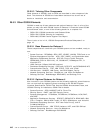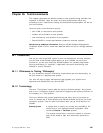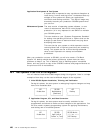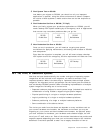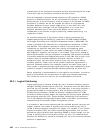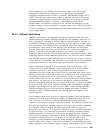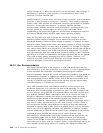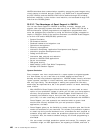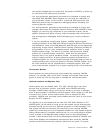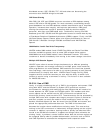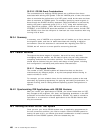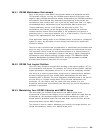central storage as if it were running natively on the processor. While storage is
dedicated to a particular virtual machine, it is unavailable to other virtual
machines, and also VM/ESA itself.
VM/ESA however, provides much more than simply hypervisor, and virtualization
functions. It also provides a full function, interactive, virtual machine operating
system, CMS. CMS provides an unmatched interactive environment for program
execution, and program development. In addition, VM/ESA provides
communication methods that allow virtual machines to communicate with one
another, as well as a shared spool for use by virtual machines. These
capabilities go far beyond the hypervisor and hardware management functions
provided by PR/SM, setting VM/ESA apart among operating systems.
Since the migration from VSE to OS/390 will involve the creation of many
operating system images to support various facets of the migration process,
speed and flexibility in defining these images is essential. In addition, for these
operating system images to be useful, they cannot operate as islands, but rather
must be interconnected in as many ways as possible. For example, the images
may need to share DASD (even though this is very difficult for VSE and OS/390 to
accomplish), may need to have VTAM connections to support NJE, file transfer,
and logon sessions, and may need shared access to printing or tape resources.
Spending a lot of time on these details diminishes the focus that can be applied
to the task at hand, namely migrating from VSE to OS/390. Therefore, it is
essential to be able to quickly and effectively bind images together without
extensive disruption to the entire operating environment.
26.3.3 Our Recommendation
With these characteristics of the migration in mind, and based upon the very
brief introduction to the two partitioning environments, it is the recommendation
of this document that customers use software partitioning with VM/ESA
whenever possible. VM/ESA will provide the partitioning flexibility, and speed of
implementation necessary to support the migration process. In addition, CMS
and other products such as RSCS, TCP/IP, and VTAM that are available to run
natively on VM/ESA can further enhance the migration process beyond what
would be possible in a PR/SM only environment.
Many VSE customers today have VM/ESA installed, and are using it as a
production hypervisor, or a hypervisor for test virtual machines. For these
customers, this recommendation is business as usual. For VSE customers who
are not currently using VM/ESA, this recommendation may seem to pose more
of a problem. However, before rejecting this idea out of hand as too costly or
difficult to implement, consider that recent pricing actions make ownership of
VM/ESA along with another S/390 operating system very attractive and
affordable. In addition, improvements in VM/ESA installation automation make it
very easy to install, typically taking no more than a couple of hours. Factor in
also the potential savings associated with not having to buy some additional
hardware to support more LPARs (such as channels, control units for consoles
and so on), and this suggestion becomes very attractive. In addition, consider
that the introduction of VM/ESA can be useful to your enterprise far beyond the
migration process. VM/ESA can continue to be used to provide a test
environment for OS/390 guests used in the maintenance and test process. As
your enterprise grows, and you begin to explore functions such as parallel
sysplex in the OS/390 environment, VM/ESA′s virtual coupling facility support
can enable you to define and run a sysplex under a single VM image without any
real coupling facilities being defined, or coupling links being purchased and
424 VSE to OS/390 Migration Workbook



